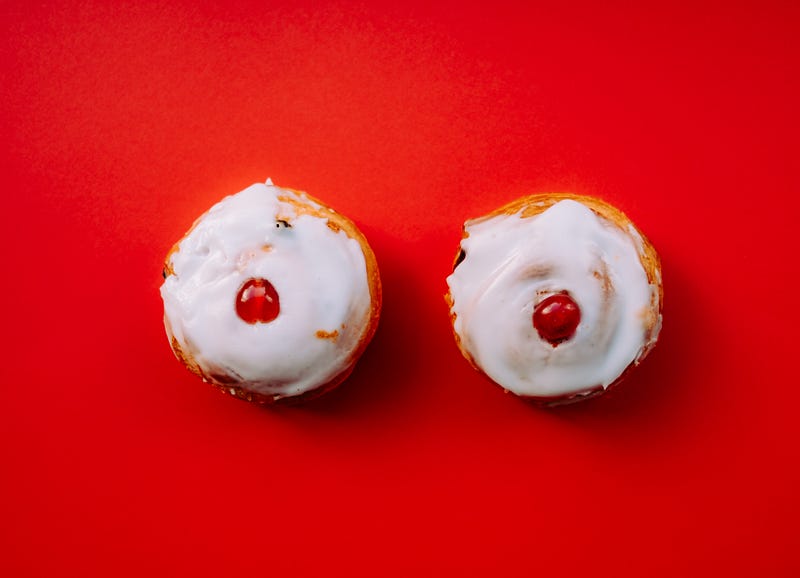Understanding the Myths of Breast Attraction: Beyond Biology
Written on
Chapter 1: Early Encounters with Objectification
At the age of thirteen, I experienced my first instance of being catcalled due to my early physical development. Even before I reached puberty, I became a subject of unsolicited attention from men who felt entitled to comment on my body.
One common justification I heard was, “Straight men are just biologically inclined to find larger breasts appealing.” This statement was often used to excuse the inappropriate behavior of these men, as if their actions were somehow natural. Unfortunately, I encountered similar comments repeatedly, ranging from crude to condescending, suggesting that men's attraction to large breasts was not only inevitable but also supported by biology.
There's nothing more infuriating than hearing predominantly straight cis men resort to flawed evolutionary psychology to validate their sexist attitudes. This argument often parallels claims that women are inherently less capable in science or are naturally inclined toward motherhood. Such assertions are not only patronizing but also fundamentally misguided.
Section 1.1: Debunking the Myth of Reproductive Value
Let’s take a moment to examine the biology behind attraction. The assumption that larger breasts correlate with higher reproductive success is flawed. These physical attributes do not guarantee increased fertility, nor do they ensure greater milk production for infants. In fact, larger breasts could even indicate that a woman is already pregnant, which would not necessarily enhance her desirability as a mate.
Moreover, many women develop breasts long before they reach reproductive maturity, complicating the idea that they serve as clear indicators of readiness for reproduction.

Chapter 2: Cultural Influences on Perceptions of Attractiveness
Contrary to popular belief, the traits we find attractive are largely shaped by cultural standards rather than biological imperatives. Take the ideal of thinness, often touted as universally appealing. Research shows that women with higher body mass indexes (BMIs) tend to have larger families and healthier babies, suggesting that higher BMIs could be viewed as attractive, yet this is often overlooked.
Different cultures have varied preferences. For instance, some may favor a "tubular" body shape over the conventional hourglass figure, while others might find rounder shapes more appealing, reflecting the values of a society that prioritizes community welfare.
In a comprehensive study conducted in 1951, anthropologists Clellan Ford and Frank Beach found that only 13 out of 191 cultures viewed breasts as sexually significant.
The video titled "This Woman is Addicted to BIG BOOBS!" explores the societal and cultural factors that contribute to the obsession with breast size, revealing how these preferences are not instinctual but learned behaviors.
Section 2.1: The Role of Cultural Conditioning in Attraction
Consider the historical practice of footbinding in China. This practice, which enforced the idea that smaller feet were desirable, was not based on biological or reproductive benefits but rather on cultural expectations steeped in misogyny.
Women can also learn to fetishize breasts due to societal influences. While there is no innate reproductive advantage for women to prefer breasts, certain cultures have conditioned them to do so. Thus, it's clear that this attraction is a product of nurture rather than nature.
Section 2.2: The Consequences of Breast Fetishization
So why is it critical to understand that men are not inherently drawn to breasts? The cultural implications are profound. Women face a paradox: they are both encouraged to display their breasts and simultaneously shamed for them. Breasts symbolize a myriad of roles—nurturers, seductresses, or even objects of shame—depending on the context.
Research over the past three decades has extensively examined the perceived importance of women's bodies, including their breasts, yet there remains a glaring absence of studies that challenge these dominant narratives.
Asking why women who embody strength and capability are not deemed more attractive raises essential questions about our understanding of beauty and desirability.

In conclusion, I urge both scientists and readers to critically evaluate their deeply rooted beliefs regarding attraction and the so-called "natural" preferences of men and women. By examining how these perceptions have shifted across different cultures and historical contexts, we can begin to dismantle the biases that shape our understanding of beauty.